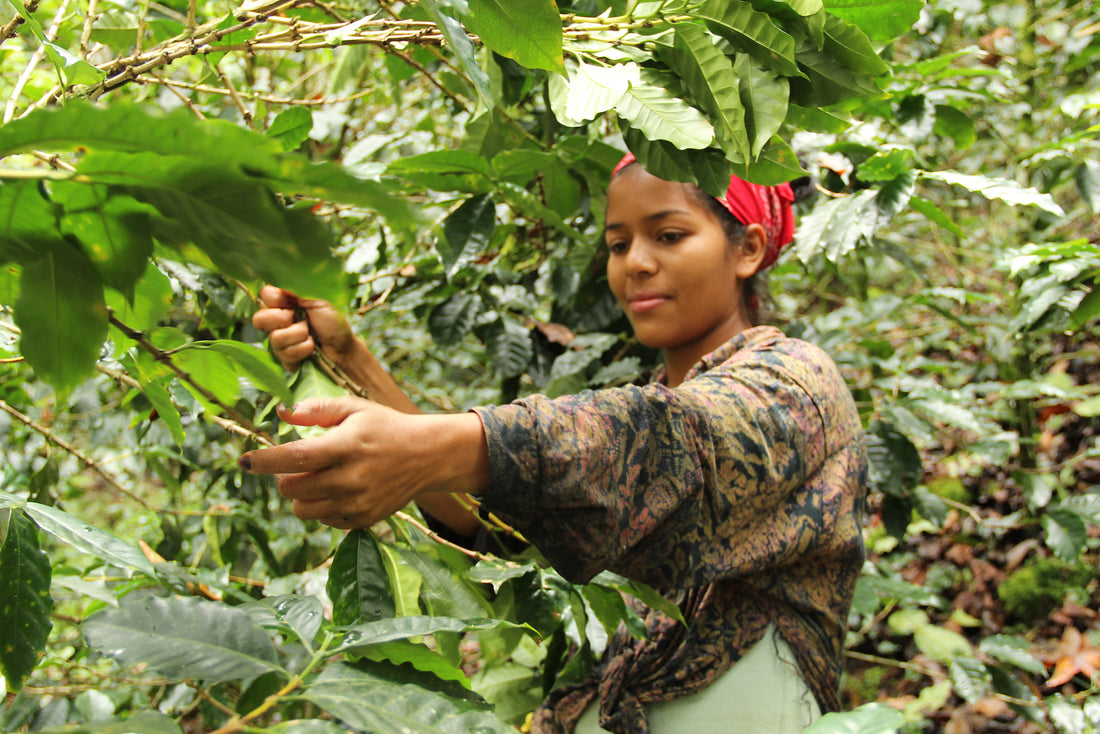
Sustainability
We are an engine for positive change
Roasting coffee is an inherently energy-intensive process requiring high heat and the shipping of raw ingredients over thousands of miles. We, therefore, have both the responsibility and the challenge of minimizing our carbon footprint to the greatest extent possible.
Agricultural production of coffee can be a carbon-intensive process itself, but since the growers we work with are small-scale farmers and work largely by hand and in an ecologically appropriate setting, little of the overall carbon budget for our product is attributable to their work.
Nearly half the carbon footprint is in overseas transshipment. Several years ago, we set our Q-grader and lead roaster to the task of retooling our blends by reducing Asian and African components and increasing those from Central America and Mexico. Their work has allowed us to reduce the average travel distance of our coffee by more than 30%, or 1,450 miles.
Investing in high-efficiency roasting technology during the late teens enabled us to slash our greenhouse gas emissions, boosting the amount of roasted coffee we could produce from 50 lbs/therm to nearly 80 lbs/therm.
In addition, we pay a surcharge on our utility bill to cover the cost of providing wind power, and because we pay it on every kilowatt-hour we use, they consider us to be 100% wind powered. Yet we were never quite comfortable with that designation. Our utility has not achieved a fully-renewable energy mix, so we know coal-generated electrons are still finding their way into our sockets. To help bridge the gap, in 2021 we invested in 50 photovoltaic panels on a utility-run solar farm. From the utility company’s view, we are now nearly 120% renewable.
Of course, sustainability is not just an environmental issue but one of economics. In addition to paying well above fair-trade minimum prices to the farmers with whom we work, we contribute $.03/lb to an “impact fund” developed by our importer, Cooperative Coffees, which helps finance technical assistance, infrastructure projects, climate–change preparedness, and other essential work in coffee-growing communities. We track the “flatness” of our wealth concentration by measuring how much of our sales revenue passes through to the farmer (it is generally in the 30%–36% range). Within our own cooperative, wage-scales have always remained below a ratio of 3-to-1.
Because we source exclusively from cooperatives and import through a cooperative, we insure that ownership and control remain vested in those who are creating wealth through their labor, right down the product chain.

-
Just Coffee is a certified B Corp
B Corp certification gives us a credible third party certification to ensure that our practices meet our mission and values– it vouches for us that we are a business that aims to be a force for good in the world. It looks at our commitment to environmental sustainability, being good partners to our suppliers, a good place to work for our employees, and a good neighbor our communities.Learn More

-
Cooperative Coffees
Cooperative Coffees is a green coffee importing cooperative, committed to building and supporting "Fair and Direct" trade relationships for the benefit of small-scale farmer families, their communities and exporting cooperatives. We strive to promote transparent Fair Trade and sustainable development alternatives in both the North and the South, while continuing to sell the highest quality coffee on the market.Learn More
IT'S TIME TO GET BREWING

-
Farmer Partners
Our relationships with farmers, their cooperatives, and their communities are at the heart of our business model. We recognize that building community and investing in farmers gives them the security of knowing that they can sell their coffee for a higher price every year. It also allows us to know that we will be able to have a regular supply of excellent coffee to roast for our customers.Learn More





